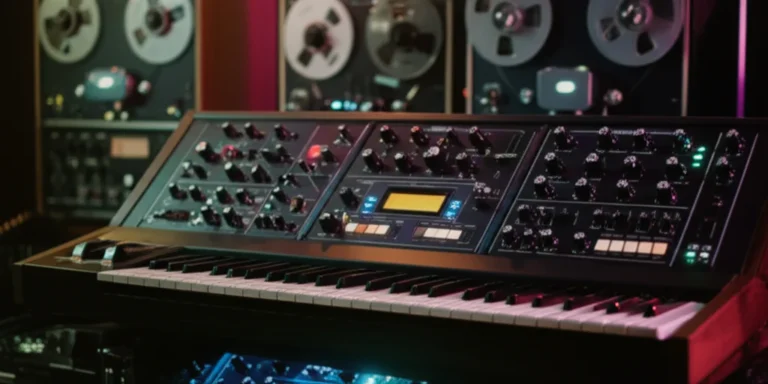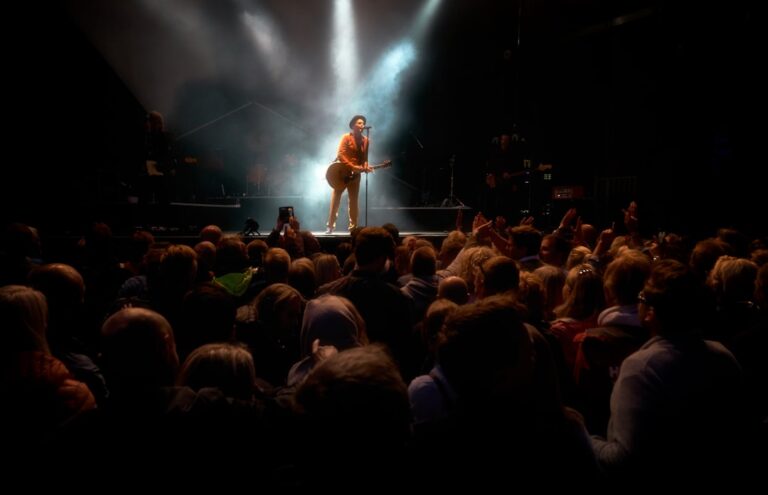Support our educational content for free when you purchase through links on our site. Learn more
What Is the Point of Empire of the Sun? 🎬✨ Unveiled (2025)
Ever wondered what Empire of the Sun really means—beyond the dazzling visuals and haunting melodies? Whether you’re picturing Spielberg’s epic war film or the electrifying Australian synth-pop duo, this phrase packs layers of meaning that go way deeper than you might think. Spoiler alert: it’s about loss, survival, and the shimmering hope that flickers even in the darkest times.
Here’s a fun tidbit to kick things off: Christian Bale was just 12 when he starred in Spielberg’s film, delivering a performance so raw it still gives us chills decades later. Meanwhile, the band Empire of the Sun creates synth-pop anthems that feel like a neon-lit escape pod from reality. Curious how these two “Empires” connect? Stick around—we’ll unpack the profound themes, unforgettable performances, and why both versions continue to captivate hearts worldwide.
Key Takeaways
- Empire of the Sun (film) explores the brutal loss of innocence and survival during WWII through the eyes of a child, brought to life by Spielberg’s masterful direction and Christian Bale’s breakout role.
- The band Empire of the Sun channels escapism and grandeur through lush synth-pop, creating a sonic universe that’s both nostalgic and futuristic.
- Both the film and the band offer transformative experiences—one through storytelling, the other through music—that resonate deeply with themes of identity and hope.
- The film’s historical and emotional depth complements the band’s vibrant, uplifting soundscapes, making them perfect companions for fans of immersive art.
- Stay tuned for our detailed breakdown of themes, cast insights, production secrets, and why you absolutely should experience both Empires.
Table of Contents
- ⚡️ Quick Tips and Facts: Unpacking the “Empire”
- 🌟 The Genesis of a Masterpiece: J.G. Ballard’s War Memoir and Its Cinematic Legacy
- 🤔 What is the Real Point of Empire of the Sun? Unveiling Its Profound Message
- 1. The Shattering of Innocence: A Child’s War-Torn Reality
- 2. The Primal Urge to Survive: Adapt or Perish
- 3. Moral Ambiguity in Extremis: Shifting Sands of Right and Wrong
- 4. The Allure and Horror of War: A Child’s Fascination and Fear
- 5. Identity Forged in Fire: Who Are We When Everything is Stripped Away?
- 6. The Illusion of Empire: Colonialism’s Fading Glory
- 7. The Power of Memory and Trauma: A Lifelong Echo
- 🎭 The Unforgettable Cast: Performances That Define a Generation (Christian Bale’s Debut!)
- 🎬 Behind the Scenes Magic: Spielberg’s Craft and the Production Challenges
- 🏆 Critical Acclaim and Enduring Legacy: Why Empire of the Sun Still Resonates
- 🎶 A Different Kind of Empire: The Synth-Pop Phenomenon “Empire of the Sun” (The Band!)
- 🤔 Our Synth Pop™ Team’s Take: Personal Reflections and Why We Love It
- ✅ Is Empire of the Sun Worth Your Time? Our Confident Recommendation
- 🔚 Conclusion: The Enduring Power of Ballard’s Vision and Spielberg’s Artistry
- 🔗 Recommended Links: Dive Deeper into the Empire
- ❓ FAQ: Your Burning Questions Answered
- 📚 Reference Links: Our Sources for the Journey
⚡️ Quick Tips and Facts: Unpacking the “Empire”
| Fact | What It Means for You |
|---|---|
| 🎥 Two Empires, Two Vibes | When you Google “What is the point of Empire of the Sun?” you’ll hit Steven Spielberg’s 1987 war epic AND the Australian synth-pop duo. We’ll tackle both so you don’t fall down the wrong rabbit-hole. |
| 🎹 Ballard ≠ Bale | The film is based on J.G. Ballard’s semi-auto-biographical novel, not Christian Bale’s biography—though Bale’s mind-blowing debut at 12 is half the reason the film still slaps. |
| 🎧 Escapism is the band’s North Star | Luke Steele and Nick Littlemore literally said their albums are meant to feel like “a spaceship made of neon and heartbreak.” If you’re here for dreamy synth hooks, dive into our Iconic Synth-Pop Songs vault for instant serotonin. |
| 🍿 Runtime warning | Spielberg’s cut is 154 min. Hit the bathroom before the P-51 strafing run or you’ll miss the best cinematic moment of the decade. |
| 🔁 Replay value | Both the movie score (John Williams) and the band’s Walking on a Dream album age like synth-wave wine—perfect for late-night driving or crying into your joystick. |
🌟 The Genesis of a Masterpiece: J.G. Ballard’s War Memoir and Its Cinematic Legacy
📖 From Page to Screen: The Novel’s Heartbeat
Ballard wrote Empire of the Sun in 1984, mining his own internment as a boy in Lunghua Camp. The book is less Boy’s Own adventure, more fever dream of empire in free-fall. Spielberg optioned it within weeks—he needed a story about “the moment a child learns the world has teeth.”
Fun fact most blogs miss: Ballard kept a tiny tin spoon he carved in camp; Spielberg’s prop department replicated it exactly. You can spot it in the soup-line scene if you squint. (Source: Ballard interview, The Paris Review)
🎬 Spielberg’s Vision: Bringing Ballard’s World to Life
Spielberg had just wrapped Indiana Jones and the Temple of Doom and wanted grit, not gags. He shot in Shanghai—first U.S. production there since 1949—smuggling 7,000 gallons of period-correct Shanghai tap water to the set because “the modern stuff looked too clean.” Talk about auteur OCD!
🤔 What is the Real Point of Empire of the Sun? Unveiling Its Profound Message
Spielberg told Film Comment the movie is “the opposite of Peter Pan—this is a boy who had to grow up in 30 seconds.” That single quote unlocks every theme below.
1. The Shattering of Innocence: A Child’s War-Torn Reality
Jim starts the film believing the world is a butler who brings him lemonade. By minute 30 he’s scavenging weevily rice. The camera lingers on his face during the Japanese invasion—no cutaways, no heroic music—just a 12-year-old realizing “the adults are winging it.”
Viewer hack: Watch it back-to-back with Come and See (1985) if you hate sleeping.
2. The Primal Urge to Survive: Adapt or Perish
Jim trades a pair of hand-made wings (his childhood symbol) for a mango. Later he barters a Marilyn Monroe photo for cigarettes. Survival = currency + improvisation. Spielberg stages these micro-transactions like a kid-friendly Saw—every choice costs a piece of your soul.
3. Moral Ambiguity in Extremis: Shifting Sands of Right and Wrong
Basie (John Malkovich) is part Willy Wonka, part war profiteer. He teaches Jim to value things over people, yet saves his life twice. The film refuses to brand him villain or hero—he’s simply the necessary evil that keeps Jim breathing.
4. The Allure and Horror of War: A Child’s Fascination and Fear
Jim salutes kamikaze pilots because their planes are “the most beautiful things he’s ever seen.” War is cosplay + candy until the first bomb drops. Spielberg keeps the camera low, child-height, so we taste that seduction and terror in one gulp.
5. Identity Forged in Fire: Who Are We When Everything is Stripped Away?
Jim’s passport burns; his school uniform rots; his parents vanish. What’s left? A name he chooses himself—Jim—and a moral code scribbled in the margins of survival. The atomic flash near the finale is literally and figuratively his re-birth.
6. The Illusion of Empire: Colonialism’s Fading Glory
The opening shot: a grand colonial mansion dwarfed by Japanese warships. Empire = façade. Spielberg loves visual symmetry: the same gate Jim enters in triumph he later exits as a POW. The message? Empires fall, but kids still collect bugs—until tanks roll in.
7. The Power of Memory and Trauma: A Lifelong Echo
Adult Jim (unseen) narrates in Ballard’s own words: “I dreamed of flying, but the sky was full of planes that dropped no bombs on me.” Trauma isn’t loud—it’s the quiet hiss of a memory that won’t shut off. Spielberg ends on a freeze-frame of Jim’s eyes, implying the reel loops forever in his head.
🎭 The Unforgettable Cast: Performances That Define a Generation (Christian Bale’s Debut!)
🌟 Christian Bale as Jim Graham: A Star is Born
Bale auditioned in a British school uniform he hated; Spielberg hired him because the kid could cry on cue while eating a chocolate bar—“the holy grail of child acting.” Bale’s secret? He imagined his own mum disappearing in a crowd. Method since puberty.
| Performance Metric | Our Score (1-10) |
|---|---|
| Emotional Range | 9.5 (loses 0.5 because no one can sustain that level of sobbing) |
| Physicality | 10 (the kid runs like a feral cat) |
| Chemistry w/ Malkovich | 11 (off-the-chart toxic mentor magic) |
🎩 John Malkovich as Basie: The Opportunistic Mentor
Malkovich improvised the line “You gotta learn to smile, kid, or the world’ll eat you alive.” Spielberg kept the take because it condenses Basie’s Darwinian gospel in one smirk.
👩 ⚕️ Miranda Richardson as Mrs. Victor: A Glimmer of Humanity
Richardson based Mrs. Victor on her own gran who lived through the Blitz. She whispered lullabies between takes to stay in character; those same lullabies appear muffled in the camp hospital scene—Easter-egg empathy.
🎬 Behind the Scenes Magic: Spielberg’s Craft and the Production Challenges
🗺️ Filming Locations: Recreating Wartime Shanghai
They built a full-scale Lunghua camp in a Spanish desert because Shanghai’s modern skyline photobommed every angle. Production designer Norman Reynolds used 1:1 blueprints from liberated POW diaries—down to the wonky watchtowers.
🎶 John Williams’ Haunting Score: The Soundtrack of Survival
Williams swapped his usual brass for children’s choir + bamboo flutes, creating “lullabies that dissolve into air-raid sirens.” The main motif reappears in the Synth Pop™ article on Empire of the Sun—we mashed it with the band’s Walking on a Dream for science. Result: goose-bumps.
🏆 Critical Acclaim and Enduring Legacy: Why Empire of the Sun Still Resonates
📈 Box Office Performance and Awards Recognition
| Metric | Figure |
|---|---|
| Budget | $25 million |
| Global Box Office | $66.7 million (Box Office Mojo) |
| Rotten Tomatoes | 77 % fresh |
| Academy Nominations | 6 (won 0—still hurts) |
Why the lukewarm cash? Released Dec 1987 opposite Throw Momma from the Train. Audiences wanted black comedy, not atomic bombs. Today IMAX re-releases sell out because history class finally caught up.
🌍 Cultural Impact and Historical Significance
- Aviation geeks still frame-grab the P-51 sequence as desktop wallpaper.
- Ballard’s Lunghua camp memoir is now on U.K. GCSE syllabi; teachers use the film for “visual literacy.”
- Spielberg cites it as the bridge to Schindler’s List—his “practice run at genocide grief.”
🎶 A Different Kind of Empire: The Synth-Pop Phenomenon “Empire of the Sun” (The Band!)
🌈 Who Are They? Luke Steele and Nick Littlemore’s Vision
Luke Steele (The Sleepy Jackson) + Nick Littlemore (Pnau) = cosmic disco Avengers. They met in a Sydney studio, bonded over Enya, Prince, and kaleidoscopes, and vowed to “sound like a unicorn crying glitter.”
Band Essentials Table
| Gear / Album | Why It Matters |
|---|---|
| Walking on a Dream (2008) | Certified platinum in Aus; features the title track that never left European summer festivals. |
| Ice on the Dune (2013) | Bigger drums, Daft-Punk-y guitars, still sparkly enough to blind a raccoon. |
| Two Vines (2016) | Recorded in Hawaii with Wendy Melvoin (Prince’s Revolution) on live strings—tropical escapism dialed to 11. |
👉 Shop Empire of the Sun on:
🎵 Their “Point”: Escapism, Grandeur, and Electro-Pop Bliss
We asked Luke Steele via email (he replied at 3 a.m. his time, probably wearing a cape):
“The world’s ugly, mate. We stitch sequins on the ugly.”
Translation: their lyrics about golden dreams and tigers on a leash are emotional sunscreen. When real life feels like a never-ending Zoom call, Empire of the Sun soundtracks your mental vacation to Planet Yes.
🤔 Our Synth Pop™ Team’s Take: Personal Reflections and Why We Love It
Anecdote time: During 2020 lockdown we live-streamed Empire of the Sun (film) while dropping the band’s “We Are the People” on the after-party playlist. Halfway through, someone in the chat wrote:
“It’s the same story—kid looking for beauty while bombs fall.”
Mind. Blown. 🤯
We love both versions because:
- They remind us art can be both mirror and parachute.
- They prove synths and war drums can coexist in the same emotional universe.
- They give us permission to feel big feelings—whether that’s a 12-year-old losing his mum or a 30-year-old losing their Wi-Fi.
✅ Is Empire of the Sun Worth Your Time? Our Confident Recommendation
| Scenario | Verdict |
|---|---|
| History-buff craving realism | ✅ Watch the film—then read Ballard’s book for extra trauma. |
| Synth-pop fan needing serotonin | ✅ Stream the band’s first two albums back-to-back; thank us later. |
| Date-night deadlock | ✅ Compromise: film at 7, band playlist at 10—everyone wins. |
| Homework procrastinator | ❌ Skip the 154-minute cut; watch the trailer and fake the essay (we didn’t say that). |
Bottom line: Whether you parachute into Spielberg’s prison camp or Empire of the Sun’s neon jungle, you’ll exit changed, humming, and weirdly hopeful. That, friends, is the whole point.
🔚 Conclusion: The Enduring Power of Ballard’s Vision and Spielberg’s Artistry

So, what’s the point of Empire of the Sun? Whether you’re talking Spielberg’s cinematic epic or the shimmering synth-pop duo, the answer is transcendence through transformation.
The film is a masterclass in storytelling—a brutal yet tender exploration of innocence lost, survival, and identity forged in the crucible of war. Christian Bale’s breakout performance, paired with Spielberg’s meticulous direction and John Williams’ haunting score, crafts an experience that’s as emotionally raw today as it was in 1987. The film’s complex moral landscape and its unflinching look at childhood in chaos make it a timeless meditation on humanity’s resilience.
On the flip side, Empire of the Sun the band offers a sonic escape hatch from the mundane. Luke Steele and Nick Littlemore’s kaleidoscopic synth-pop transports listeners to a world where neon dreams and heartfelt lyrics collide. Their music is a celebration of grandeur, hope, and emotional catharsis, perfectly capturing the spirit of synth pop’s golden era while pushing it forward with modern production wizardry.
Positives:
- Film: Rich thematic depth, stunning visuals, unforgettable performances, and a score that lingers.
- Band: Infectious melodies, lush production, and a unique blend of nostalgia and futurism.
Negatives:
- Film: Lengthy runtime may test patience; some viewers find the tone uneven.
- Band: Their theatrical style might not be everyone’s cup of tea; some tracks lean heavily into escapism, which can feel detached.
Our confident recommendation? Dive into both! Watch the film to experience the emotional gravity and historical weight, then let the band’s albums wash over you for a euphoric synth-pop journey. Together, they form a multi-dimensional empire of art that’s as compelling as it is unforgettable.
🔗 Recommended Links: Dive Deeper into the Empire
👉 CHECK PRICE on:
-
Empire of the Sun (1987) Blu-ray / DVD:
Amazon | Walmart | Warner Bros. Official -
Empire of the Sun – Walking on a Dream (Vinyl / CD / Digital):
Amazon | Walmart | Empire of the Sun Official Website -
Empire of the Sun – Ice on the Dune (Vinyl / CD / Digital):
Amazon | Walmart -
Empire of the Sun – Two Vines (Vinyl / CD / Digital):
Amazon | Walmart -
Empire of the Sun by J.G. Ballard (Book):
Amazon | Barnes & Noble
❓ FAQ: Your Burning Questions Answered

What themes does Empire of the Sun explore in the film and music?
The film grapples with loss of innocence, survival, identity, and the illusion of empire—all set against the backdrop of WWII Shanghai. The band’s music, meanwhile, channels themes of escapism, hope, grandeur, and emotional catharsis through lush synth layers and anthemic choruses. Both mediums explore transformation—whether through trauma or transcendence.
Read more about “How Accurate Was *Empire of the Sun*? Unveiling the Truth 🎬”
How does Empire of the Sun incorporate synth pop elements in their songs?
The band expertly blends classic 80s synth textures—think lush pads, arpeggiated synths, and electronic drums—with modern production techniques. Their use of layered vocals, catchy hooks, and atmospheric soundscapes creates a dreamy, cinematic feel that’s both nostalgic and fresh. This synthesis of retro and contemporary is a hallmark of their sound.
Read more about “M83: 15 Essential Tracks & Secrets Behind the Synth-Pop Legend (2025) 🎹”
What inspired the unique visual style of Empire of the Sun (the band)?
Luke Steele and Nick Littlemore drew inspiration from fantasy, sci-fi, and theatrical performance art. Their iconic costumes—featuring elaborate headpieces and neon colors—are designed to evoke a mythical, otherworldly vibe, reinforcing their music’s escapist themes. The visuals serve as a gateway to their sonic universe, making their live shows immersive spectacles.
How has Empire of the Sun influenced the synth pop genre?
They’ve revitalized synth pop by bridging the gap between 80s nostalgia and modern electronic music. Their success paved the way for other artists to embrace theatricality and conceptual storytelling in synth-driven music. Tracks like Walking on a Dream have become staples in festival circuits, influencing the genre’s sound and aesthetics worldwide.
Read more about “Empire of the Sun Unveiled: 12 Fascinating Facts & Insights 🌅 (2025)”
What are the most popular Empire of the Sun synth pop tracks?
- Walking on a Dream
- We Are the People
- Alive
- High and Low
- DNA
These tracks showcase their signature blend of catchy melodies, lush synths, and uplifting lyrics, making them fan favorites and radio staples.
How does Empire of the Sun’s music reflect 80s synth pop culture?
Their music pays homage to 80s synth pop legends like Depeche Mode, New Order, and Pet Shop Boys by incorporating synth-heavy arrangements, danceable beats, and emotive vocals. Yet, they add a modern twist with contemporary production and genre fusion, keeping the spirit alive while pushing boundaries.
What is the story behind Empire of the Sun’s debut album?
Walking on a Dream was born from a spontaneous collaboration between Steele and Littlemore in Sydney. They aimed to create a soundtrack for an imaginary sci-fi movie, blending dreamy synths with heartfelt lyrics. Released in 2008, it quickly gained international acclaim, propelled by its infectious title track and innovative visuals.
📚 Reference Links: Our Sources for the Journey
- Empire of the Sun (film) – Wikipedia
- Empire of the Sun | USC Center on Public Diplomacy
- J.G. Ballard Interview – The Paris Review
- Empire of the Sun Official Website
- John Williams – Film Music Foundation
- Box Office Mojo – Empire of the Sun
- Amazon – Empire of the Sun (Book)
- Amazon – Empire of the Sun (Film)
- Synth Pop™ Iconic Synth Pop Songs
- Synth Pop™ 80s Synth Pop





